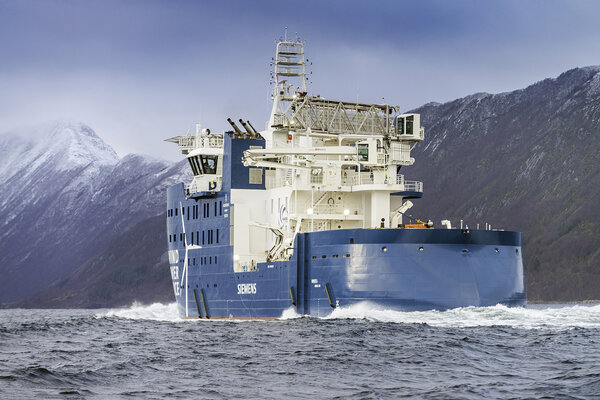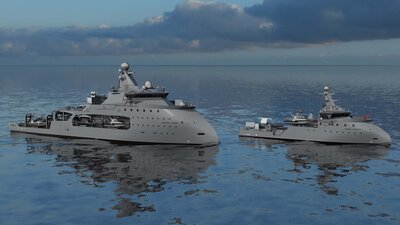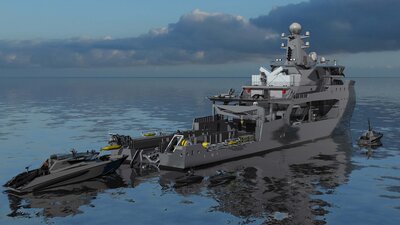'Windea Leibniz' is an ULSTEIN SX175 design and was delivered from Ulstein Verft in February 2017. Having arrived at the wind farm, the vessel will transfer technicians to and from the various wind turbines.
Operational feedback on existing SOV vessels shows that the crew managements choose to operate the vessels in astern mode up to 75% of the time at offshore wind farms. This number is very likely to increase further on the 'Windea Leibniz' due to her X-STERN® aft solution.
The SOV owners give various reasons for astern operations:
- It leads to a better overview of the vessel's positioning, as the gangway, the turbine and the ship's side can all be observed from the bridge
- Most power is installed in the aft part of the ship, enabling it to keep positioned more easily
- The vessel doesn't have to turn around before leaving for the next turbine, saving manoeuvering time between turbine
X-STERN®
Windea Leibniz is equipped with the new ULSTEIN X-STERN. This aft design has been developed for the SOVs to work close to the offshore wind farm structures, disregarding the directions of wind or waves, or where it is headed next. The X-STERN is a follow-up of the X-BOW® fore ship design, both originating from Ulstein's long experience in designing for the offshore industry.
The X-STERN was designed for increased operability and station-keeping whilst in dynamic positioning mode. The vertical transom plate, a very common aft shape, will create slamming when going backwards or when being positioned with the stern towards waves, wind and current. The X-STERN, however, is a pointed aft. The sloping and higher stern, with its sharp stern shape, improves offshore wind farm service and maintenance. This has an importance when it comes to the flexibility and efficiency of the vessel. The X-STERN improves the crew and passenger comfort and increases the operability through positive effects on station keeping, wave response and safety in harsh conditions. It operates with reduced power and fuel consumption while staying positioned.
Keeping up backward speed without reducing comfort
A vessel with the X-STERN can keep almost the same speed in backward mode as in forward mode without the occurrence of slamming or vibrations. The sister vessel 'Windea La Cour' has demonstrated the ability to sail astern at a speed of 12.1 knots, just 1.8 knots shy of her forward speed, and she is easily manoeuvred both ways. At the sea trial, the crew management noted the vessel's smooth motions and the very low levels of noise and vibrations, all these being important factors in a vessel in which one of the main tasks is to transport and accommodate service technicians.
BS Offshore gives this feedback from the first X-STERN vessel, the 'Windea La Cour':
"The X-STERN is a big advantage for the daily operation. Since it enables the vessel to run fast and efficient backwards, the vessel can choose the fastest way to the next turbine either it is going with the bow or the stern. During the last 12 months the first X-STERN has met all expectations and it is amazing to see a vessel going backwards in bad weather without slamming and having spray on deck."
The Award winner, the cable lay vessel 'NKT Victoria' was announced on 30 May 2017 at the Nor-Shipping exhibition.



